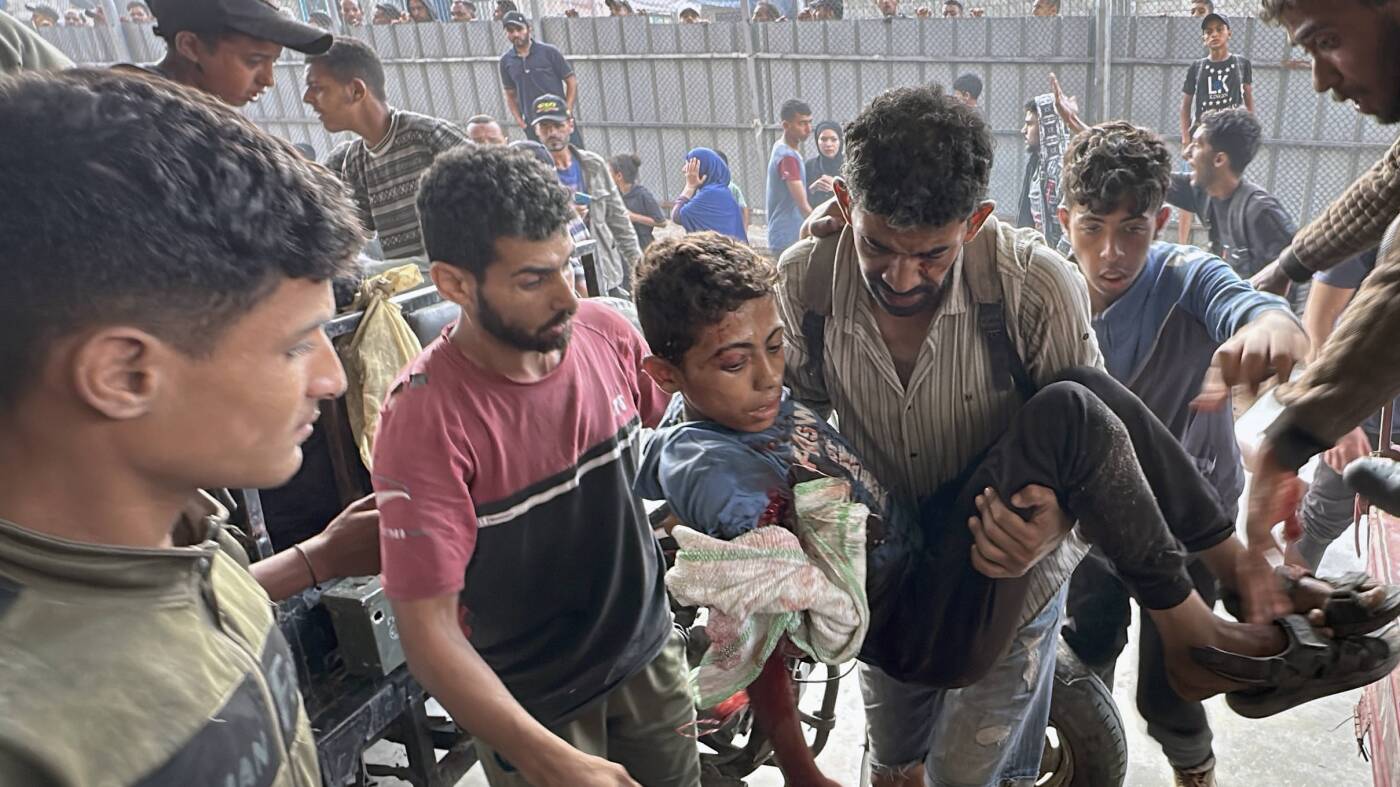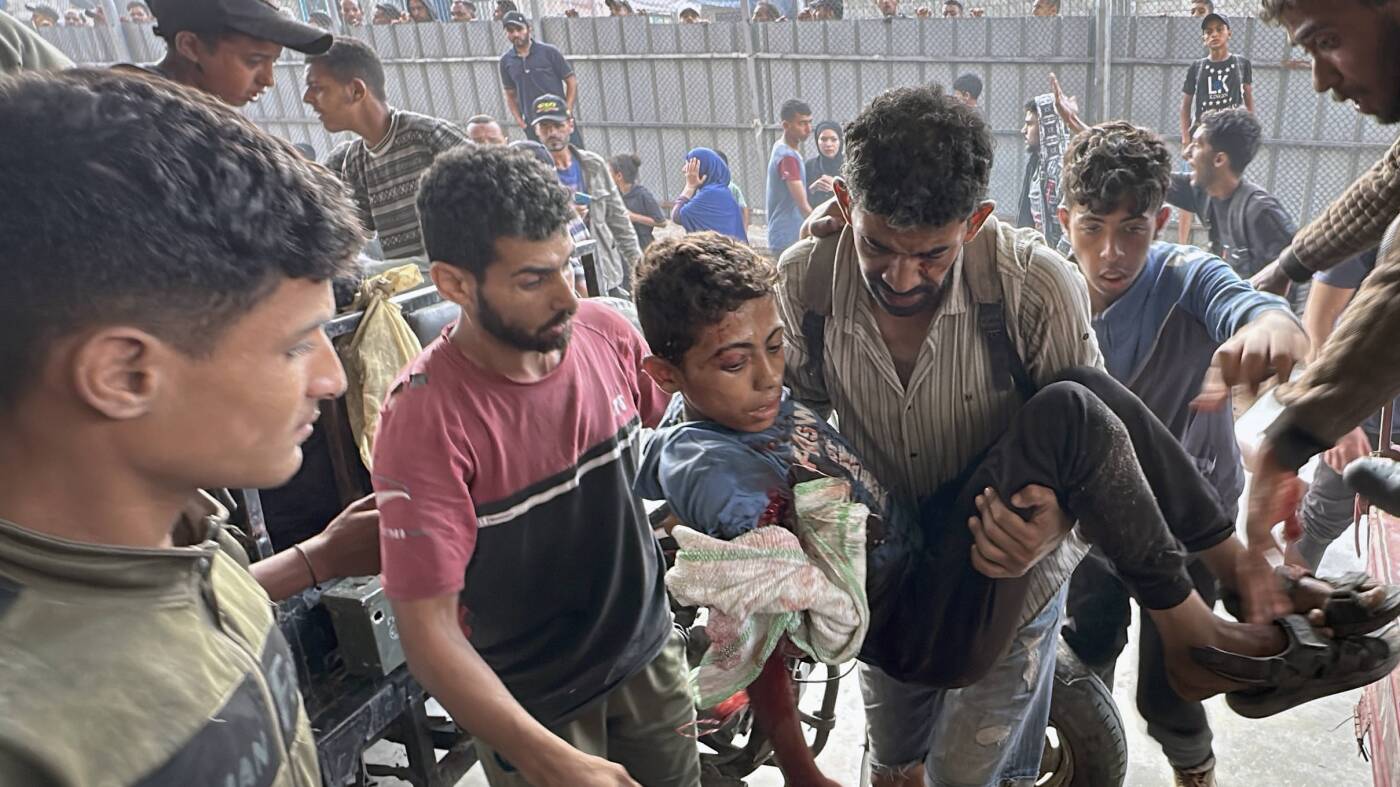The Humanitarian Catastrophe in Gaza
In the heart of the Middle East, Gaza is facing an unprecedented humanitarian crisis. The convergence of a mounting death toll, a looming famine, and a complex geopolitical landscape has created a perfect storm of suffering. As Israel shifts its focus towards Iran, the situation in Gaza worsens, demanding urgent attention and action.
A Population on the Brink
Starvation is gripping Gaza with an alarming intensity. Half a million people are already experiencing extreme hunger, and the entire territory is teetering on the edge of famine. This is not a distant threat but a present reality, with dozens of people, including children and the elderly, dying from starvation-related causes. The United Nations has warned that the situation could deteriorate into a full-blown famine within months if immediate action is not taken.
The healthcare system in Gaza is on the verge of collapse. Hospitals are overwhelmed, crippled by a blockade that restricts the flow of medical supplies. The Health Ministry has issued desperate appeals for blood donations, highlighting the critical decline in medical resources. The sheer number of casualties, exacerbated by the ongoing violence, has stretched the healthcare infrastructure to its breaking point.
Displacement and trauma are rampant. The relentless bombardment and ground operations have turned Gaza into a landscape of destruction, forcing countless individuals to flee their homes and seek refuge in overcrowded shelters. The psychological toll on the civilian population is immense, with many living in constant fear and uncertainty.
The Escalating Violence
While Israel’s strategic focus has shifted towards Iran, military operations within Gaza continue unabated. Tuesday marked one of the deadliest days in recent weeks, with Israeli forces killing over 50 aid seekers in Khan Younis and at least 20 people while waiting for food aid. These incidents highlight the extreme danger faced by civilians attempting to access essential resources.
The overall death toll in Gaza is staggering, approaching 20,000. This figure dwarfs the casualties of previous conflicts and exceeds the death rate observed in other war-torn regions like Ukraine. The scale of death and destruction is immense, leaving a lasting scar on the region. The pattern of violence disproportionately impacts the most vulnerable populations, including children and the elderly.
The Geopolitical Chess Game
Israel’s evolving strategic focus on Iran is undeniably impacting the situation in Gaza. While attention is diverted to potential escalation with Iran, Israeli troops remain deeply entrenched within Gaza, and operations continue to claim civilian lives. The U.S. has expressed concern over the mounting civilian death toll and has urged Israel to scale back its offensive, but the violence persists.
The attacks on Iran and the subsequent retaliations have created a volatile regional dynamic. This heightened tension risks further diverting international attention and resources away from the humanitarian crisis in Gaza. The focus on preventing a wider Middle East war is crucial, but it cannot come at the expense of addressing the immediate needs of the Gazan population.
Criticism of Israel’s actions has intensified, with accusations of waging a “war on children” and employing tactics amounting to extermination and acts of genocide. These accusations, while highly charged, reflect the depth of concern surrounding the humanitarian consequences of the conflict. The deliberate deprivation of essential resources like water has sparked widespread outrage and demands for accountability.
The Blockade: A Tool of Control
The ongoing blockade of Gaza is a critical factor exacerbating the crisis. This long-standing policy, intensified during the current conflict, severely restricts the flow of essential goods, including food, water, medicine, and fuel. Reports highlight the deliberate cutting off of water supplies and the obstruction of aid deliveries, rendering the situation even more dire.
The blockade is not merely a consequence of the war; it is a pre-existing condition that has systematically undermined the resilience of the Gazan population. The international community has repeatedly called for increased humanitarian access to Gaza, but these calls have largely gone unheeded. The obstacles to delivering aid are numerous, ranging from bureaucratic hurdles and security concerns to deliberate restrictions imposed by Israeli authorities.
The Path Forward
The convergence of escalating violence, a shifting Israeli focus, and a crippling humanitarian crisis paints a bleak picture for the future of Gaza. The immediate priority must be to alleviate the suffering of the civilian population. This requires a significant increase in humanitarian aid, a lifting of the blockade, and a commitment to protecting civilians.
However, addressing the immediate crisis is only the first step. A lasting solution requires a comprehensive political settlement that addresses the root causes of the conflict and ensures the long-term security and well-being of both Israelis and Palestinians. Without such a settlement, the cycle of violence and suffering will inevitably continue, and the humanitarian crisis in Gaza will remain a persistent and tragic reality.
A Call to Action
The current situation in Gaza demands not only a cessation of hostilities but also a fundamental reassessment of the policies and practices that have contributed to this devastating outcome. The international community must step up its efforts to provide humanitarian assistance and pressure all parties involved to adhere to international law and human rights standards. The future of Gaza hangs in the balance, and the world cannot afford to look away. The time for action is now, before the crisis reaches an irreversible point. Every life lost is a tragedy, and every life saved is a testament to our shared humanity. The people of Gaza deserve a future free from fear, hunger, and violence. It is our collective responsibility to ensure that this future becomes a reality.








